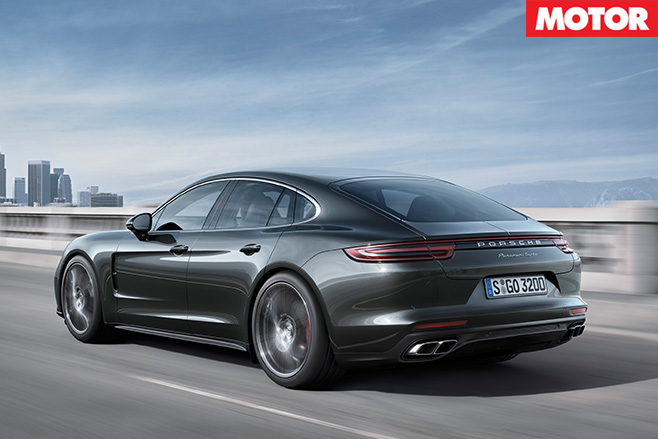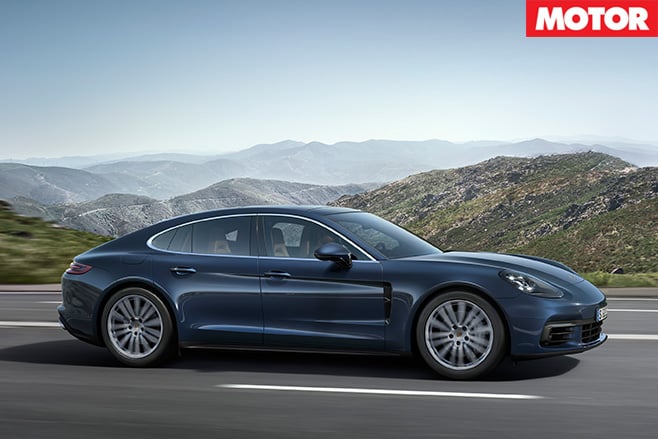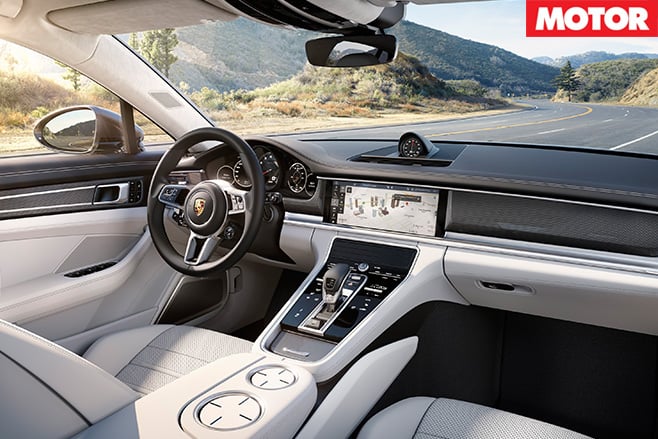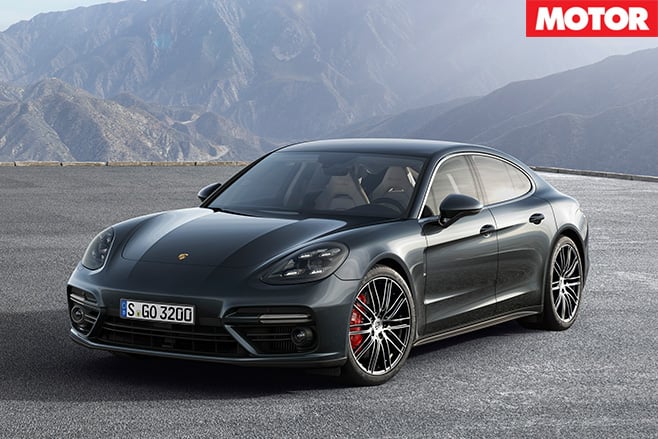Porsche has whipped the covers off its all-new Panamera.
And it really is all-new, as while the styling is evolutionary in true Porsche tradition there’s a brand new platform, three new engines and a high-tech new interior, all of which is aimed at giving the likes of the Maserati Quattroporte and Mercedes-Benz S-Class a very hard time.
Let us start, however, with the styling, one of the more, ahem, polarising features of the first Panamera. The new car is longer (34mm), wider (6mm) and taller (5mm) with an extra 30mm in the wheelbase, however the crucial part of the new design has been the removal of 20mm from the rear roofline to give the car a more 911-like profile.

All use two turbochargers mounted within the vee of the engine, the most powerful of which is the Turbo’s 4.0-litre V8, which uses a pair of twin-scroll turbochargers to produce 404kW at 5750rpm and 770Nm from 1960-4500rpm.
This results in a 0-100km/h claim of just 3.8sec and a top speed of 306km/h, while claimed fuel consumption drops to just 9.4-9.3L/100km (depending on spec), thanks in no small part to being the first Porsche to be able to deactivate half its cylinders while cruising.

The true fuel miser, however, is the new 4.0-litre V8 4S Diesel, which claims just 6.8-6.7L/100km. Not that it skimps on performance, with a claimed 0-100km/h sprint of 4.5sec thanks to 310kW at 3500rpm and a thumping 850Nm from 1000-3250rpm.
The diesel uses variable turbine geometry turbos, first seen on the 911 Turbo, and introduces two-stage turbocharging – set to appear on the Bugatti Chiron – which is the ability to send all exhaust gases through one turbo at low revs to improve throttle response, before the second turbine kicks in at 2700rpm.

All Australian Panameras will benefit from air suspension and PASM adaptive dampers as standard, while the optional PDCC (Porsche Dynamic Chassis Control) adds torque vectoring capability and active anti-roll bars. The steering is now electrically assisted and rear-wheel steering appears for the first time.
Perhaps the Panamera’s biggest step forward, however, can be seen inside. The multitude of buttons on the centre console has been replaced by a giant 12.3-inch touchscreen which controls the new infotainment system, while the analogue tachometer is flanked by two 7.0-inch digital displays which display vehicle (left) and communication (right) information.

The ‘G2’ Panamera officially goes on sale on June 29 with the first $304,200 4S and $376,900 Turbo deliveries expected in Q1 2017 and the $312,100 4S Diesel set to land shortly after.






